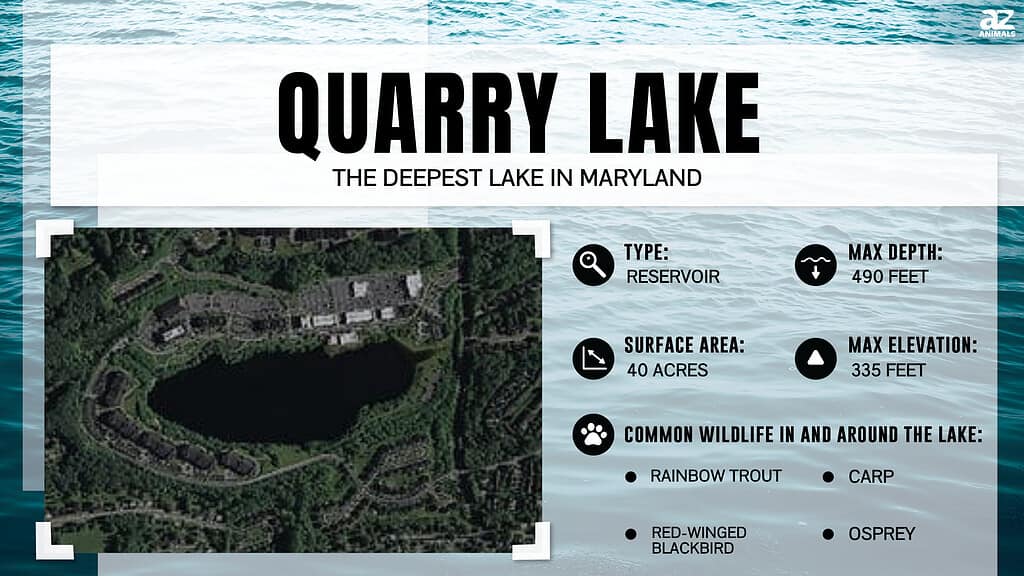
Maryland does not have any natural lakes. All of the lakes in Maryland are artificial. Lakes constructed by people are often called reservoirs. Reservoirs are made by damming rivers and flooding the surrounding valley or area. Often towns had to be relocated or demolished to make room for the new “lakes.” Engineers would monitor how deep the reservoirs were and calculate the full pool level of the lake based on the capacity.
The Liberty Reservoir located just northwest of downtown Baltimore is 144 feet deep at the deepest point, but is that the deepest lake in Maryland? What about Deep Creek Lake (it has “deep” right in its name!)? Deep Creek Lake is the biggest inland lake in Maryland but is it the deepest? Let’s find out about the deepest lake in Maryland.
What Is the Deepest Lake in Maryland?
The deepest lake in Maryland is Quarry Lake. Quarry Lake at Greenspring is located in Baltimore County. It was not made by damming a nearby river but by filling an old quarry. In the mid-1800s, the Greenspring Quarry was mined for stones to be used along the railroad system. Later the stones were used in local construction projects until 1999. In 2005 the quarry and the land around it were purchased to be developed into a commercial and residential area centered around the water-filled quarry (Quarry Lake!).

Quarry Lake is the deepest lake in Maryland with a depth of 500 feet.
©James Stuby based on USGS image, Public domain, via Wikimedia Commons – License
How Deep Is the Deepest Lake in Maryland?
The deepest lake in Maryland is 500 feet deep. Quarry Lake may not be the biggest lake, it is only 40 acres, but it is the deepest lake in Maryland. The hole left after the quarry had been dug out was 500 plus feet at the deepest spot.
Where Is Quarry Lake Located on a Map?
Quarry Lake is situated in the Pikesville area of Baltimore County. It is around 10 miles from downtown Baltimore. Lake Roland is to its east.
Is Quarry Lake a Recreational Lake?
No, not really. You won’t be water skiing on the 40-acre lake. There is a nice walking trail around the lake and a small park with a gazebo on the eastern side. The Quarry Lake Clubhouse is also on the eastern side with a swimming pool, hot tub, and tennis courts. The Citron Restaurant on the north side has a lakeside patio to enjoy your dinner and drinks.
How Deep Is Deep Creek Lake?
Deep Creek Lake is 75 feet deep at the deepest point. The lake is the biggest inland lake in the state at 3,900 acres. It is a beautiful lake in the Allegheny Mountains in the far western panhandle of Maryland. Deep Creek Lake is a recreational lake where you can enjoy boating, kayaking, swimming, camping, and fishing. The Deep Creek Lake State Park is on the northeast side of the lake and has a campground and sandy swimming beach.

Deep Creek Lake in Maryland is the biggest inland lake where you can enjoy boating, kayaking, swimming, camping, and fishing.
©Infinitum Imagery/Shutterstock.com
How Is the Fishing on Deep Creek Lake?
The fishing is excellent on Deep Creek Lake, especially for trout, bass, walleye, yellow perch, and pike. There are several docks you can fish from or take your boat out to troll for the perfect fishing hole. Don’t limit your fishing to the summer months because Deep Creek Lake is a popular place for ice fishing in the winter as well.

Deep Creek Lake is a popular spot for ice fishing.
©iStock.com/gr8mgb
Are There Any Fishing Records From Deep Creek Lake?
Yes! The biggest northern pike ever caught in Maryland was reeled in from Deep Creek Lake! A 24.8-pound pike was caught by Shawn Jacobson on October 16, 1999. It might have been chilly fishing in October but it certainly wouldn’t have been ice fishing weather yet.
The second state fishing record pulled from Deep Creek Lake is not a huge fish, but is big for its species. A 3.4-pound bluegill was caught by Sarah Brenneman on August 9, 1998 — that’s nearly 25 years ago and the record stands today.

Bluegills can be 7-16 inches long.
©iStock.com/stammphoto
How Deep Is the Chesapeake Bay?
The Chesapeake Bay is 175 feet deep at the deepest point. Most of the Bay is relatively shallow with an average depth of 21 feet. More than a quarter of the Bay is less than 6 feet deep. The entire Bay is around 200 miles long and is a habitat for a wide variety of animals and fish. The mix of freshwater and saltwater provides a unique ecosystem. The Chesapeake Bay is the largest estuary (mix of fresh and saltwater) in North America.
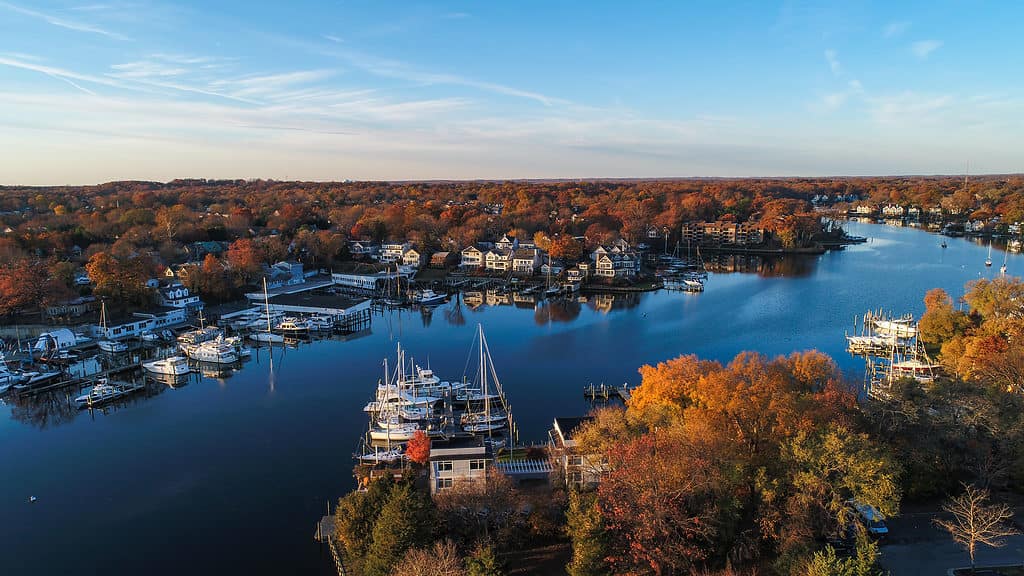
Chesapeake Bay is around 200 miles long and is a mix of freshwater and saltwater, which creates a unique ecosystem.
©Nicole Glass Photography/Shutterstock.com
What Kinds of Fish Are in the Chesapeake Bay?
The Chesapeake Bay has a mix of fish with some species staying closer to the mouth of the river where the water is mostly fresh water to those that prefer the more brackish water closer to the Atlantic. Some of the fish you will find in the Bay include American shad, Atlantic sturgeon, black drum, brook trout, northern puffer, pumpkinseed, red drum, striped bass, and white perch.
Are There Sharks in the Chesapeake Bay?
Yes! Bull sharks are in the Chesapeake Bay. They are one of the few sharks that can adapt to fresh and brackish waters. Bull sharks are one of the sharks most often seen by people because they like to swim and hunt in shallow coastal waters. Full-grown bull sharks can get to be 7-11 ½ feet long and weigh between 200-500 pounds!
Sandbar sharks are also one of the most common sharks in the Bay area. Sandbar sharks are a little smaller than bull sharks with the adults getting to be around 6 feet long and weighing 100-200 pounds.
Other shark species you might find in the Bay include sand tiger sharks, spiny dogfish, and smooth dogfish.
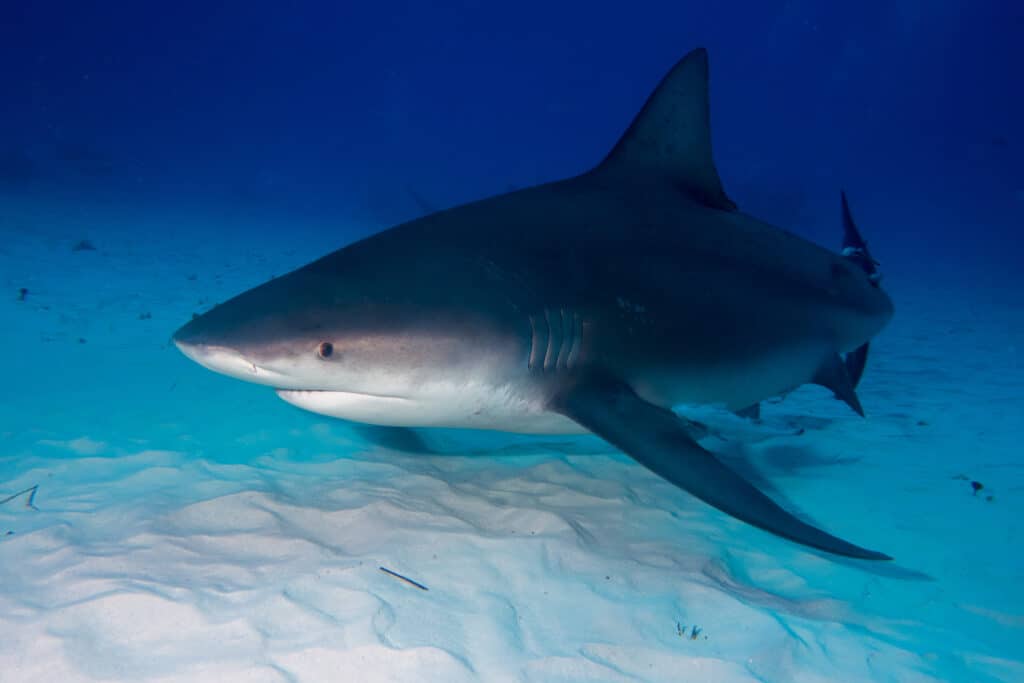
Bull sharks are in the Chesapeake Bay because they can adapt to fresh and brackish waters.
©HakBak/Shutterstock.com
Are There Great White Sharks in the Chesapeake Bay?
Great white sharks usually do not make their way into the Bay. On October 23, 2022, a Great white shark was spotted near the mouth of the Chesapeake Bay. The research group OCEARCH has been tagging sharks and monitoring their movements up and down the coast. A tagged shark nicknamed “Bob” pinged off the coast of Virginia and was reported to be 13 feet long. Great white sharks can get to be 20 feet long and weigh up to 5,000 pounds! “Bob” kept going down the coast and did not make his way into the Bay … this time.
Have There Been Shark Attacks in the Chesapeake Bay?
No. There have not been any shark attacks in Chesapeake Bay. According to the Maryland DNR, there are no records of shark bites in the Bay.

There are no recorded shark attacks at Chesapeake Bay.
©Lou Taylor/Shutterstock.com
How Deep Is the Atlantic Ocean Off the Coast of Maryland?
The ocean off the shore of Maryland slopes gradually and then drops in several places. Just offshore it is around 65 feet but 70-80 miles from the shore is the Norfolk Canyon, an underwater canyon of the ocean floor. Here it is around 6,000 feet deep! Compared to the deepest lake in Maryland, that’s about 5,500 feet deeper.
Where Is the Deepest Point in the Atlantic Ocean?
The deepest point on the Atlantic Ocean is in the Puerto Rico Trench, also called the Milwaukee Deep. The Atlantic Ocean is 27,481 feet at this point. That makes Quarry Lake’s 500 feet seem like a puddle!
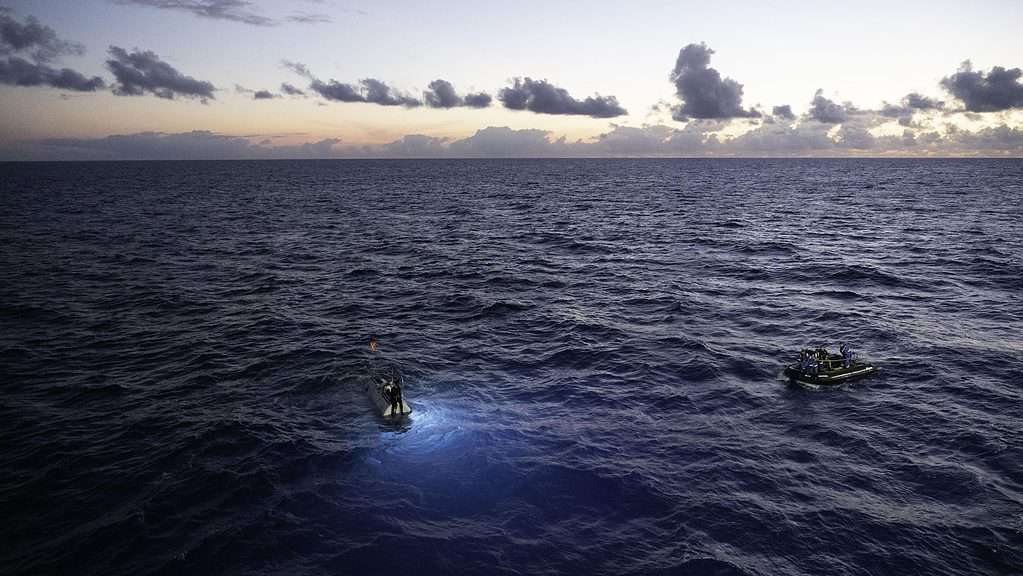
The deepest point on the Atlantic Ocean is in the Puerto Rico Trench, which has a depth of 27,481 feet.
©Richard Varcoe on behalf of Caladan Oceanic LLC, CC BY-SA 4.0, via Wikimedia Commons – License
What Fish Live in the Deepest Waters?
Much of the ocean is unexplored, especially the deepest areas of the ocean. But what researchers have found are some unique fish that live near the bottom of the ocean. Frilled sharks, which look more like eels than sharks, have been documented at nearly 5,000 feet deep. Researchers at the Mariana Trench, the deepest trench in the Pacific Ocean, found a new deepwater fish called the Mariana snailfish (Pseudoliparis swirei). “Scientists collected 37 specimens of the new species from depths of about 22,600 feet to 26,200 feet along the trench.” These small translucent fish look somewhat like pale tadpoles.
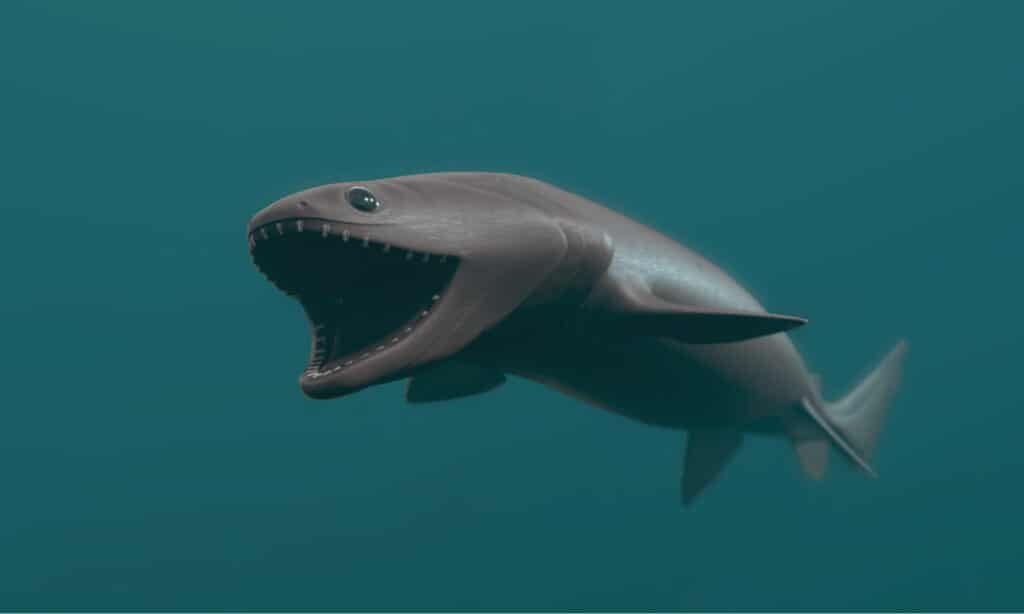
Frilled sharks are some of the unique animal species scientists have discovered in the ocean.
©iStock.com/3dsam79
You won’t find any snailfish or frilled sharks in the deepest lake in Maryland. You will find ducks, gulls, and geese on the lake but nothing quite as unique as an ancient eel-like shark.
The photo featured at the top of this post is © Infinitum Imagery/Shutterstock.com
Sources
- Maryland Department of Natural Resources, Available here: https://dnr.maryland.gov/fisheries/pages/hotspots/liberty.aspx
- Maryland Department of Natural Resources, Available here: https://dnr.maryland.gov/fisheries/pages/state-records.aspx
- Maryland Department of Natural Resources, Available here: https://news.maryland.gov/dnr/2017/06/21/sharks/
- Shark Research Institute, Available here: https://www.sharks.org/frilled-shark-chlamydoselachus-anguineus
Thank you for reading! Have some feedback for us? Contact the AZ Animals editorial team.






